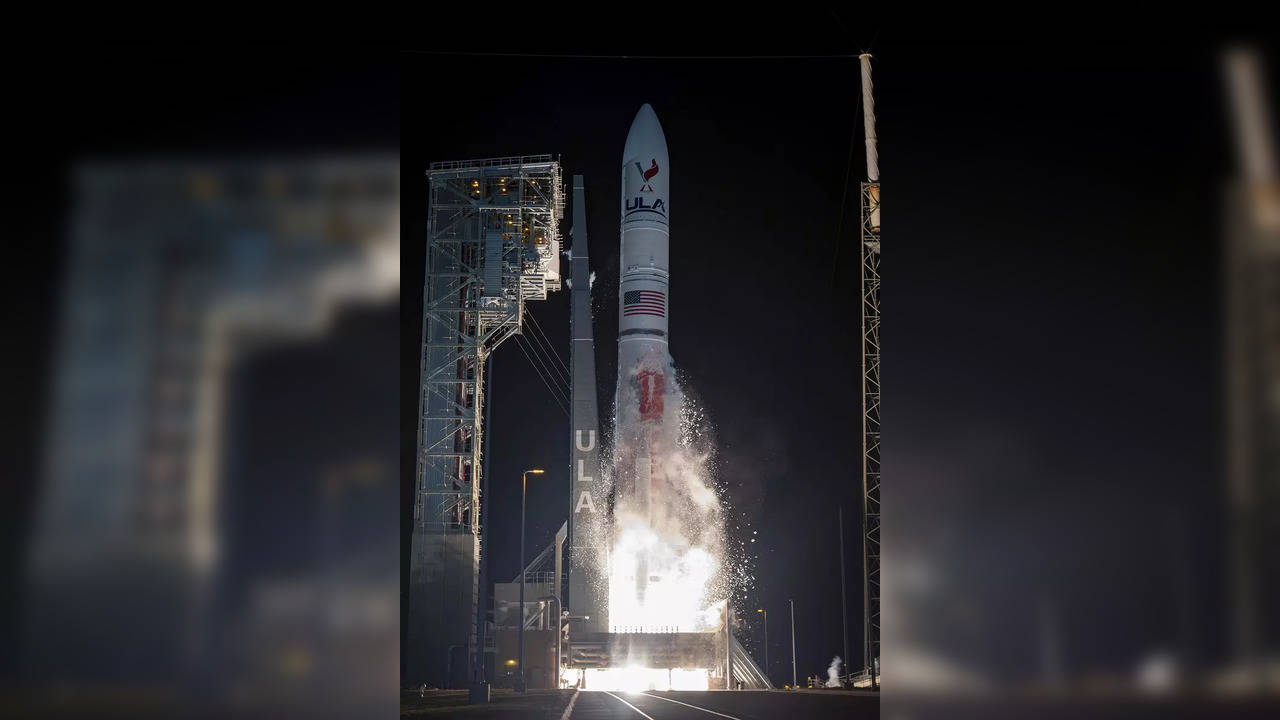
Astrobotic's Peregrine Mission 1 lander
Cape Caneveral (Florida, USA): The Peregrine spacecraft was launched with much fanfare and hopes but within six hours of its maiden flight, engineers reported a technical "anomaly" — a propellant leak that jeopardised the mission. An oxidizer leak has left the lunar lander stranded in space carrying human remains. After much research and analysis, it is now clear to the company's engineers as to what may have happened.
How did this oxidiser leak sabotage such an expensive and hardfought mission? Astrobotics engineers have identified the potential cause of a fuel leak that has left the Peregrine spacecraft with "no chance" of completing its mission. NASA and Astrobotics must concede that this is the first US craft to attempt a soft landing on the moon in 50 years - after the famous and successful Apollo landings -- and fail. The lander was set to touch down on the moon on February 23, deploying five NASA payloads (which cost the space agency $108 million for their delivery) and 15 other experiments on the moon.
The Peregrine spacecraft had its work cut out for itself. It was launched with the goal to become the first private craft to perform a controlled landing on the moon, and had accordingly, carried onboard the instruments to measure the conditions on the lunar surface. "Astrobotic's current hypothesis about the Peregrine spacecraft's propulsion anomaly is that a valve between the helium pressurant and the oxidizer failed to reseal after actuation during initialization," Astrobotic representatives wrote in a statement - as reported by
Space.com. "This led to a rush of high pressure helium that spiked the pressure in the oxidizer tank beyond its operating limit and subsequently ruptured the tank."
Astrobotic technology and NASA planned to make it a Memorial flight, which was
slammed by the Navajo Nation veterans. Memorial flight means the spacecraft was also carrying human remains, including those of science fiction writer Arthur C Clarke; Star Trek creator Gene Roddenberry; and Roddenberry wife's, Majel Barrett -- a decision that became controversial as the Navato Nation natives consider the moon a holy object and were worried that sending cremains will defile it. Navajo Nation President Buu Nygren wrote an open letter to NASA and the U.S. Department of Transportation (DOT) to register his people's protest.
And it so happened that finally, the trip was doomed and now the spacecraft, though launched from Earth, is not expected to make a soft landing on the moon. The leak means there is now "no chance of a soft landing on the Moon," Astrobotic representatives reportedly wrote in
another statement. "However, we do still have enough propellant to continue to operate the vehicle as a spacecraft."
To land on the moon's surface, the 1.3-ton (1.2 metric tons) spacecraft would have needed to reorient its engine and fire controlled bursts of propellant to slow its descent.
The Celestis Voyager Memorial Spaceflight — also known as the Enterprise Flight, which was also launched on the Vulcan rocket and was slated to journey to deep space — is carrying the ashes of more than 200 individuals, including Star Trek's Nichelle Nichols, James Doohan and DeForest Kelley, who played Nyota Uhura, Montgomery Scott and Dr. Leonard McCoy, respectively, on the classic sci-fi show.
Stored alongside these remains are samples of DNA from the US presidents George Washington, Dwight Eisenhower and John F Kennedy.
Astrobotic Technologies will try to retrieve as much benefits and cut the losses on loss of planned studies as best as it can. Now that the moon-landing part of the mission has been abandoned, the company says it will try to keep Peregrine's solar batteries charged so that it can provide data for future missions. When whatever little of the propellant that was meant to steer the heavy spacecraft runs dry, and later when the battery too becomes incapable of generating any power, however, Peregrine will become a rudderless, unmanaged, floating tomb.




















